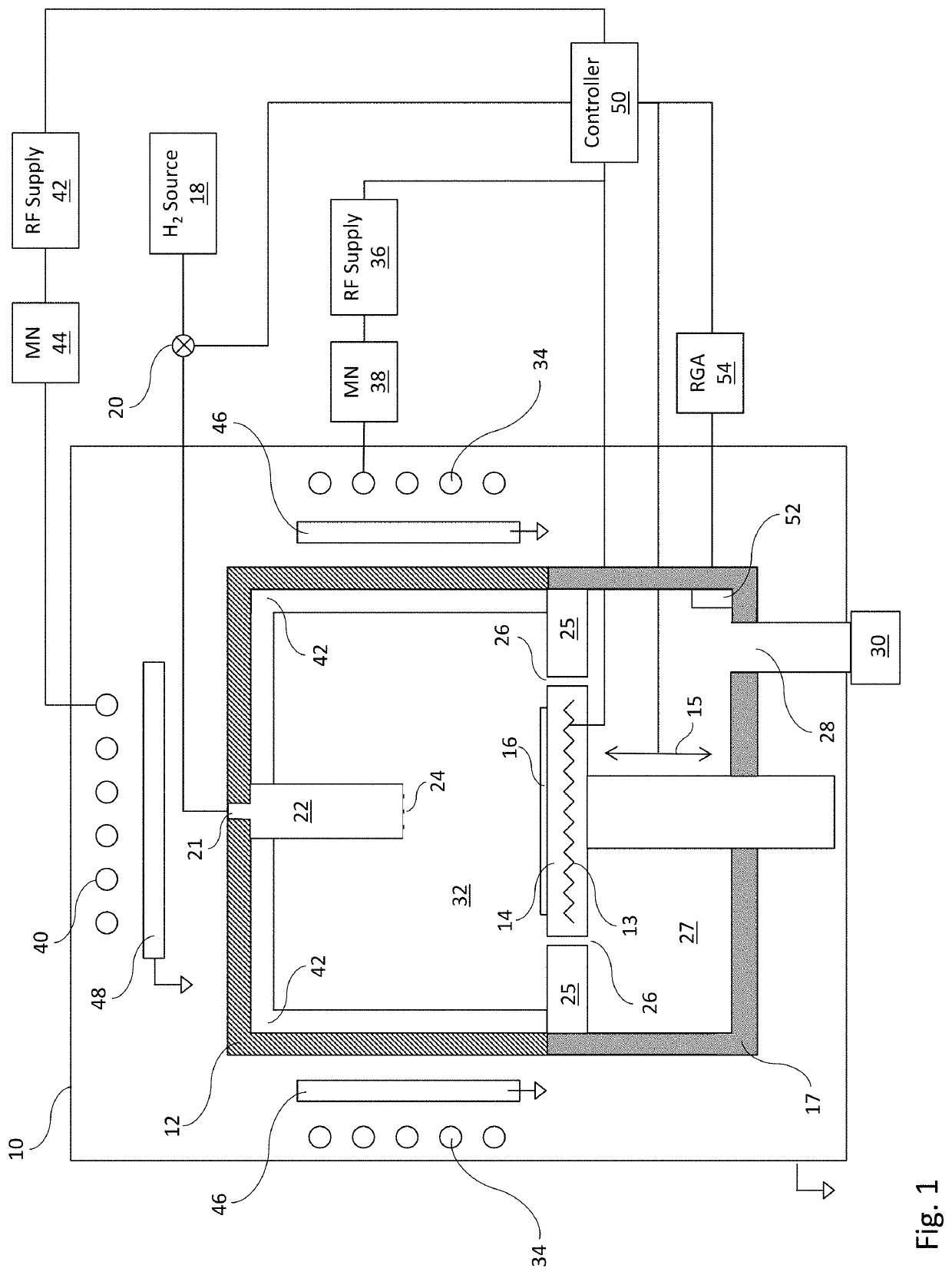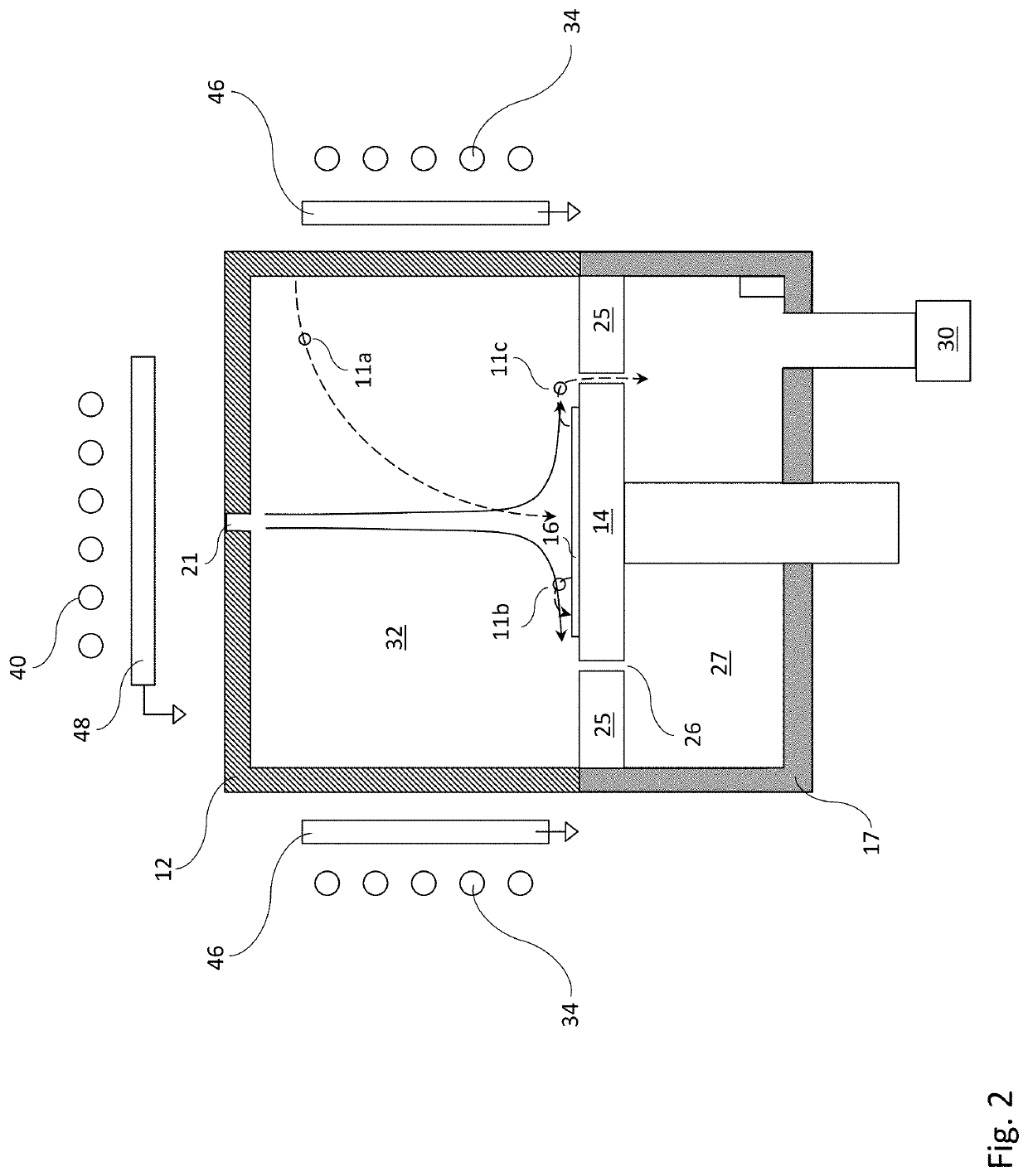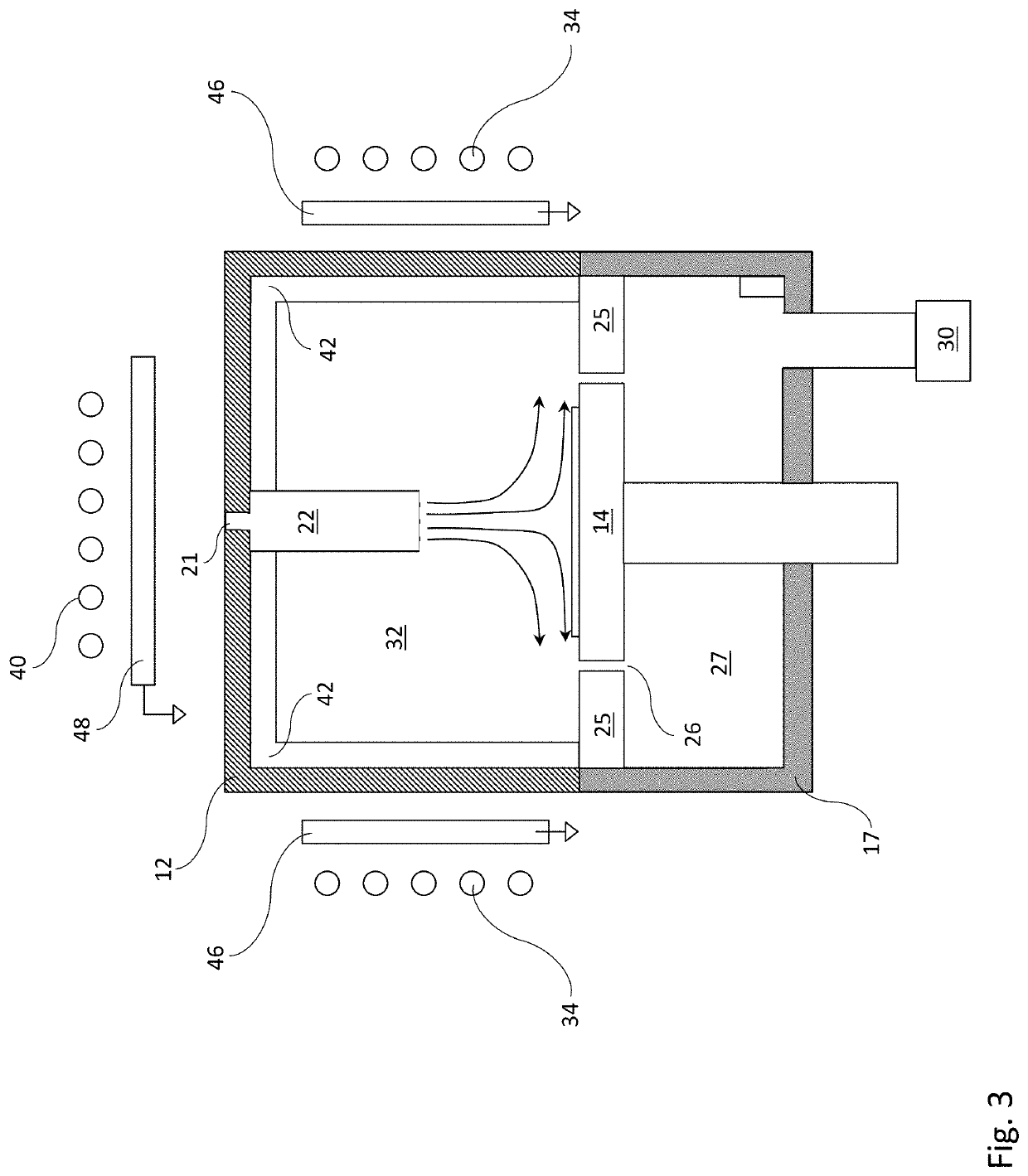Method and apparatus for surface preparation prior to epitaxial deposition
a surface preparation and epitaxial deposition technology, applied in the field of dielectric vessels, can solve the problems of reducing the thermal budget of wafers, reducing the radially outward velocity of gas, and reducing so as to increase the transport of volatile compounds and reduce the time needed for processing
- Summary
- Abstract
- Description
- Claims
- Application Information
AI Technical Summary
Benefits of technology
Problems solved by technology
Method used
Image
Examples
Embodiment Construction
[0044]In the following detailed description of the preferred embodiments, reference is made to the accompanying drawings that form a part hereof, and in which are shown by way of illustration specific embodiments in which the invention may be practiced. It should be understood that other embodiments may be utilized and structural changes may be made without departing from the scope of the present invention. Description associated with any one of the figures may be applied to a different figure containing like or similar components / steps. While the sequence diagrams each present a series of steps in a certain order, the order of some of the steps may be changed.
[0045]There are two, independent functions of the pre-treat wafer process for semiconductor IC fabrication that may be completed prior to epitaxy, and especially hetero-epitaxy. If not already apparent, the “treat” in “pre-treat” refers to the subsequent epitaxy treatment. The first function, wafer surface cleaning (also calle...
PUM
| Property | Measurement | Unit |
|---|---|---|
| temperature | aaaaa | aaaaa |
| temperature | aaaaa | aaaaa |
| temperatures | aaaaa | aaaaa |
Abstract
Description
Claims
Application Information
 Login to View More
Login to View More - R&D
- Intellectual Property
- Life Sciences
- Materials
- Tech Scout
- Unparalleled Data Quality
- Higher Quality Content
- 60% Fewer Hallucinations
Browse by: Latest US Patents, China's latest patents, Technical Efficacy Thesaurus, Application Domain, Technology Topic, Popular Technical Reports.
© 2025 PatSnap. All rights reserved.Legal|Privacy policy|Modern Slavery Act Transparency Statement|Sitemap|About US| Contact US: help@patsnap.com



